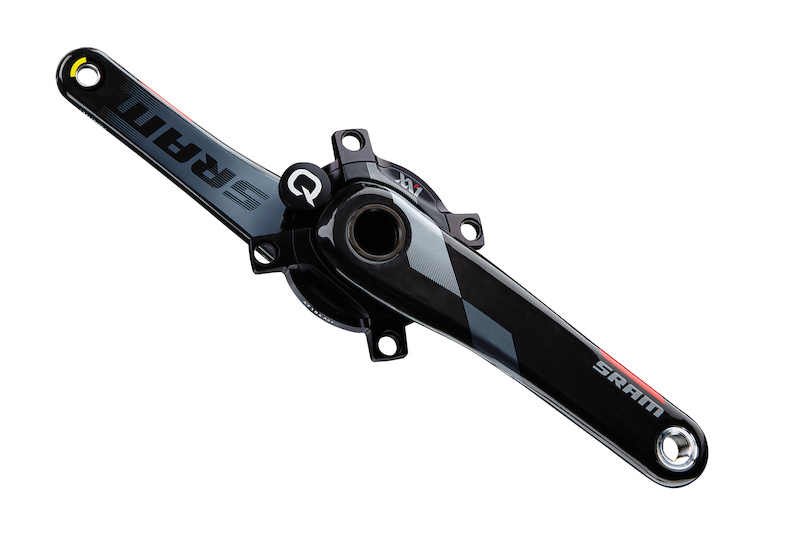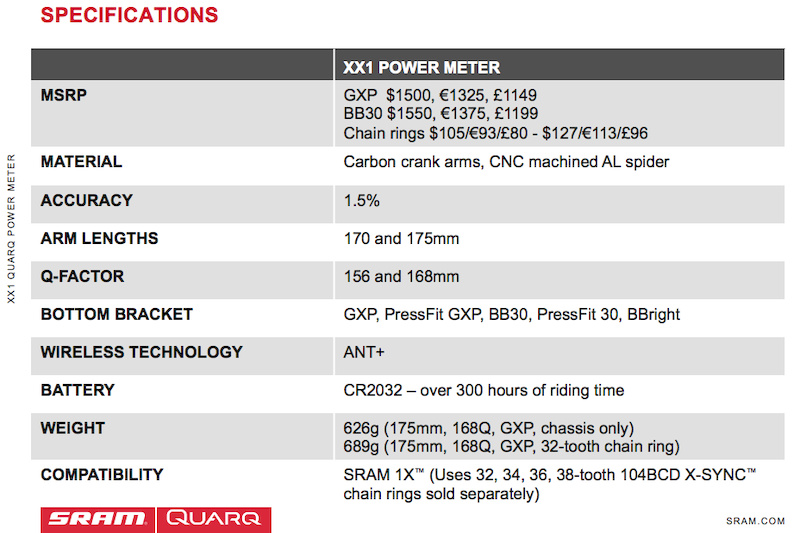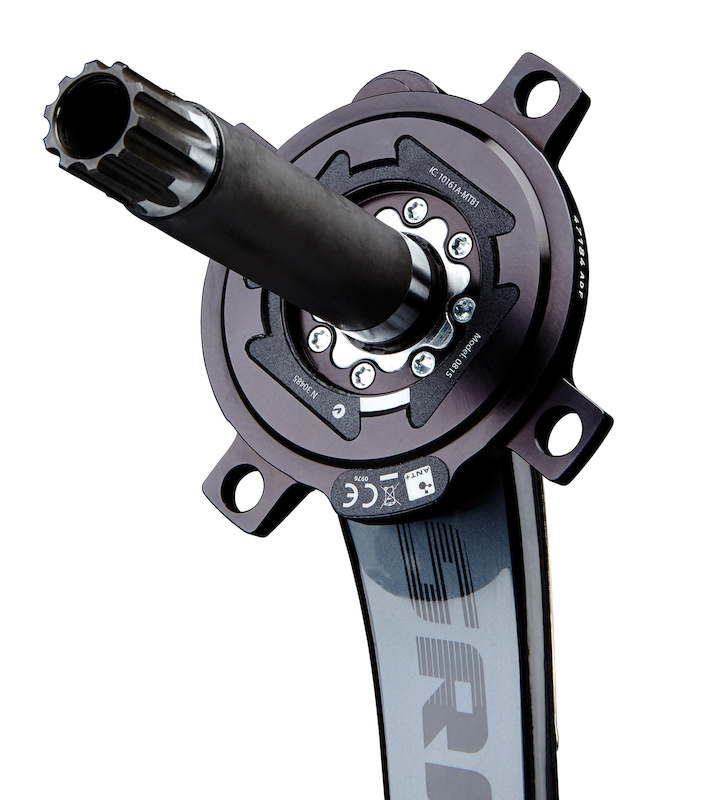SRAM XX1 Quarq Power Meter Cranks
SRAM XX1 Power Meter:
• Carbon arms – 170 and 175mm
• 156 and 168mm Q-factors
• 104 BCD – 32, 34, 36, and 38-tooth chain rings sold separately
• GXP and BB30
• Multipoint, active temperature compensation
• Accelerometer cadence
STRENGTH AND POSITION:
• Built hand-in-hand with the XX1 drivetrain – highest performance, integrated look
• Designed for X-SYNC™ and compatible with XX1, X01 and X1
• Light weight, LED indicator and replaceable CR2032 battery
• Each power meter is individually calibrated at the factory to eliminate temperature effects on power measurement
• Accelerometer for cadence – no need to install a magnet
• IPX7 waterproof rating (1 meter of submersion for 30 minutes)
• All SRAM MTB Q-factors, crank lengths and bottom brackets
ONE AND ONLY:
The 1X™ drivetrain that launched an XC World Championship, SRAM XX1 was built to be simpler, lighter and more durable than any other. Calibrated to work together, SRAM XX1 components deliver remarkable chain control and rapid, high-precision shifting. Which gives serious riders exactly the edge they need. UNSTOPPABLE.
X-SYNC™
SRAM X-SYNC™ 1X™ chain rings provide the highest level of performance and durability. The SRAM X-SYNC™ tall square teeth edges engage the chain earlier than traditional triangle shaped teeth. The sharp and narrow tooth profile, as well as rounded chamfer edges, help manage a deflected chain. To provide the best possible performance in muddy conditions, the X-SYNC™ chain rings have been designed with mud-clearing recesses for the inner chain links and rollers. Engineered in Germany, X-SYNC™ rings are an integral part of the SRAM 1X™ drivetrain. Accept no imitation.
SRAM X-SYNC™: A DEVELOPING STORY
When SRAM’s engineers first turned their attention to X-SYNC™, they began by examining the multi-speed, single-ring systems that were already on the market. From inside and outside derailment to mud-clogged gear recesses, the rings presented clear opportunities for improvement. So the engineers started to design—and redesign. Each iteration of the new chain ring went to the field for trial runs. And from all of this came X-SYNC™, MTB’s first wide tooth, narrow tooth chain ring.
But wide tooth, narrow tooth alone didn’t cut it. The SRAM team plowed ahead with a single goal in mind: to create a ring that contributed to the SRAM 1X™ drivetrain built around simplicity and durability. Every detail was scrutinized, leading to optimized square tooth geometry. To asymmetric tooth-tip offset. To sharp-tipped teeth that catch the chain at extreme offsets. Chamfers and radii designed for optimized guiding. Enhancements engineered to limit roller movement. And mud recesses that keep the chain clean and moving. All focused on the dynamic bike platform for XC, Trail, Enduro, and Gravity riding. And all part of an integrated SRAM 1X™ system precision-designed so that every aspect of X-SYNC™ works perfectly with the rest of the drivetrain.
The original wide tooth, narrow tooth chain ring is the optimized ring for riders who never compromise. X-SYNC™—ONLY BY SRAM.
INTENDED USES
CROSS COUNTRY
XC riders use it to dial in their training, objectively assess race results and fine-tune their diet.
MARATHON
Marathon racers use it to pace themselves and monitor energy loss.
ENDURO – DOWNHILL
Enduro and downhill racers use it to see how often they pedal and how hard, analyze power and cadence vs. gear selection and seated vs. standing pedaling, and monitor fatigue.
www.sram.com
Author Info:
Must Read This Week
Sign Up for the Pinkbike Newsletter - All the Biggest, Most Interesting Stories in your Inbox
PB Newsletter Signup





I agree that it is easier to use on a road bike since you can look at your output regularly more safely, but I think for those worried about performance on the MTB, this is a great tool for monitoring your improvement.
Also, can a power meter tell u if you are fatigued or not?
CROSS COUNTRY
XC riders use it to dial in their training, objectively assess race results and fine-tune their diet.
That's a joke right?